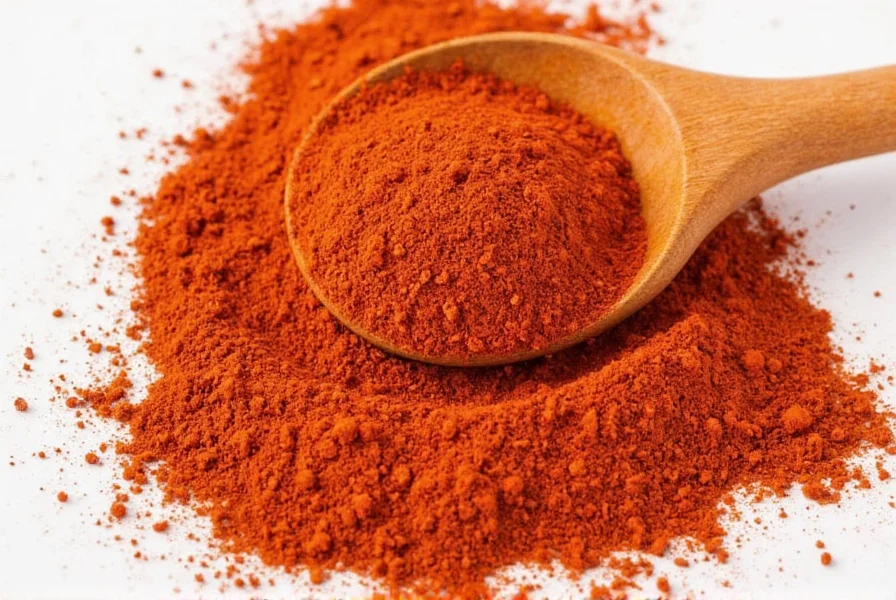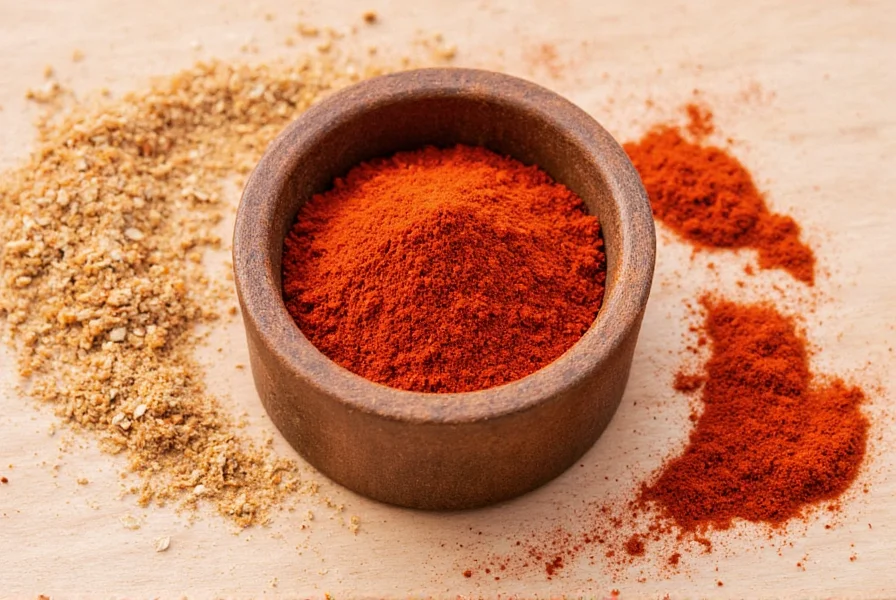Understanding chili powder spice begins with recognizing its dual identity: in Mexico and authentic Latin American cooking, it refers to pure ground dried chilies, while in the United States it's commonly a seasoned blend. This distinction matters significantly when following recipes across culinary traditions.
What Exactly Is Chili Powder?
True chili powder spice originates from dried Capsicum peppers ground into fine powder. The specific pepper variety determines flavor and heat level:
- Ancho chili powder: Made from poblano peppers, offering sweet, raisin-like notes with mild heat (1,000-2,000 SHU)
- Chipotle powder: Smoked jalapeños providing smoky depth with moderate heat (2,500-8,000 SHU)
- Generic "chili powder": Typically a U.S. blend containing 40-60% ground chilies plus cumin, garlic, oregano, and salt
| Type | Primary Pepper | Heat Level (SHU) | Flavor Profile |
|---|---|---|---|
| Ancho | Poblano | 1,000-2,000 | Sweet, fruity, raisin-like |
| Chipotle | Smoked Jalapeño | 2,500-8,000 | Smoky, earthy, medium heat |
| Cayenne | Cayenne | 30,000-50,000 | Sharp, intense heat |
| U.S. Blend | Mixed chilies | 500-3,000 | Earthy, seasoned, mild heat |
How Chili Powder Differs From Similar Spices
Many home cooks confuse chili powder vs paprika, but they're distinct. Paprika comes from sweeter peppers (like bell peppers) and ranges from sweet to hot varieties, while chili powder always contains heat-producing chilies. The difference between chili powder and cayenne is equally important—cayenne is pure ground cayenne peppers (much hotter), whereas chili powder is either a single mild chili or a seasoned blend.
When examining chili powder ingredients on store shelves, check labels carefully. Authentic Mexican-style powders list only "chili peppers" while American blends include additional spices. This distinction affects recipe outcomes significantly.
Practical Uses in Cooking
Mastering how to use chili powder in cooking transforms ordinary dishes. For optimal flavor development:
- Bloom in oil: Heat 1 tsp powder in 1 tbsp oil for 30 seconds before adding other ingredients
- Balance acidity: Pair with tomatoes or citrus to enhance flavor complexity
- Layer flavors: Add early for base notes, late for brighter heat
- Meat rubs: Combine with salt, garlic powder, and cumin for steak or chicken
Popular applications include:
- Texas-style chili (use ancho-based powder)
- Fajita seasoning blends
- Enchilada sauces
- Deviled eggs and potato salad
- Spiced roasted nuts

Finding Suitable Substitutes
When you need chili powder substitutes, consider these options based on what's missing from your recipe:
- No heat needed: 1 tsp paprika + ¼ tsp cumin
- Moderate heat required: 1 tsp paprika + ¼ tsp cayenne + ¼ tsp garlic powder
- Authentic Mexican flavor: 1 tsp ancho powder + ¼ tsp oregano
- Quick fix: 1 tbsp tomato paste + ¼ tsp cayenne (for sauces)
Remember that is chili powder spicy depends on the blend—American versions are typically mild, while pure ancho or chipotle powders deliver more noticeable heat. Always taste before adding more.
Storage and Freshness Tips
To maintain how to store chili powder properly:
- Keep in airtight container away from light and heat
- Store below 70°F (21°C) for maximum shelf life
- Replace every 6-12 months (color fading indicates loss of potency)
- Freeze for long-term storage (up to 2 years)
Fresh chili powder should have vibrant color and strong aroma. If it smells dusty or looks dull, it's lost flavor compounds and won't deliver optimal results in best chili powder for recipes.
Nutritional Profile
Per tablespoon (6g), chili powder provides:
- 15 calories
- 3g carbohydrates
- 1g fiber
- 6% daily vitamin A
- 4% daily iron
- Capsaicin (metabolism-boosting compound)
The capsaicin in chili powder may support metabolism and provide anti-inflammatory benefits, though these effects are modest at typical culinary usage levels.

Expert Cooking Recommendations
Professional chefs recommend these chili powder cooking tips:
- Toast whole dried chilies before grinding for homemade powder
- Add acid (lime juice or vinegar) to balance earthy notes
- Combine with complementary spices: cumin enhances earthiness, cinnamon adds warmth
- Use in dry rubs 1-2 hours before cooking for deeper flavor penetration
- For authentic Tex-Mex, seek blends without cumin (traditional Texas chili uses pure chilies)
When selecting what is the best chili powder, consider your recipe's origin. Mexican dishes typically require pure ground chilies, while American Southwest recipes often specify seasoned blends. Reading chili powder ingredients list helps match your culinary goals.
Frequently Asked Questions
What is the difference between chili powder and chili seasoning?
Chili powder refers to ground dried chilies (pure or blended), while chili seasoning always contains additional spices like cumin, garlic, and oregano. In the U.S., most supermarket 'chili powder' is actually chili seasoning blend.
Can I substitute paprika for chili powder?
Yes, but with adjustments. Use 1 tsp paprika plus ¼ tsp cumin and ¼ tsp garlic powder to approximate standard chili powder. For heat, add a pinch of cayenne. Note that paprika alone lacks the earthy depth of true chili powder.
Why does my chili powder taste bitter?
Bitterness usually comes from overheating. Chili powder burns easily—never add it directly to hot oil. Instead, bloom in warm (not smoking) oil for 20-30 seconds, or add to liquid-based dishes early in cooking to mellow flavors.
Is chili powder gluten-free?
Pure chili powder made from just dried chilies is naturally gluten-free. However, some commercial blends may contain anti-caking agents with gluten. Always check labels if you have gluten sensitivity, especially with seasoned blends.
How can I make my own chili powder blend?
Toast 4 dried ancho chilies and 2 guajillo chilies until fragrant (about 30 seconds per side). Remove stems and seeds, then grind to fine powder. For American-style blend, mix 2 tbsp pure chili powder with 1 tsp cumin, ½ tsp garlic powder, and ¼ tsp oregano.











 浙公网安备
33010002000092号
浙公网安备
33010002000092号 浙B2-20120091-4
浙B2-20120091-4